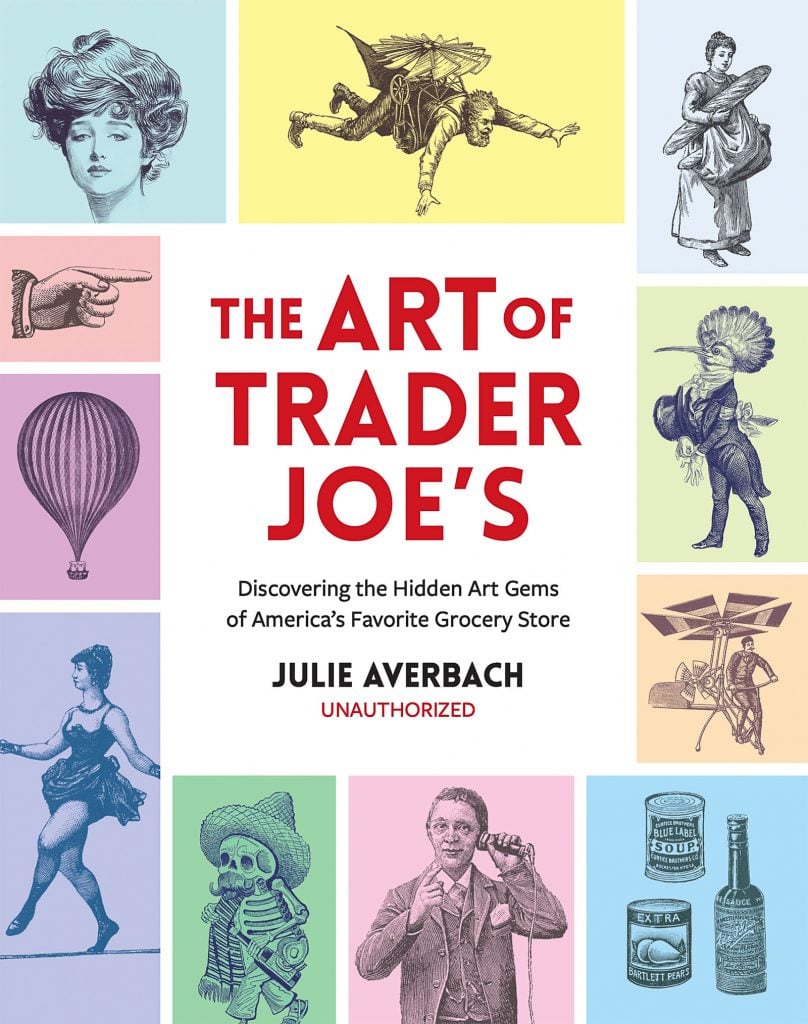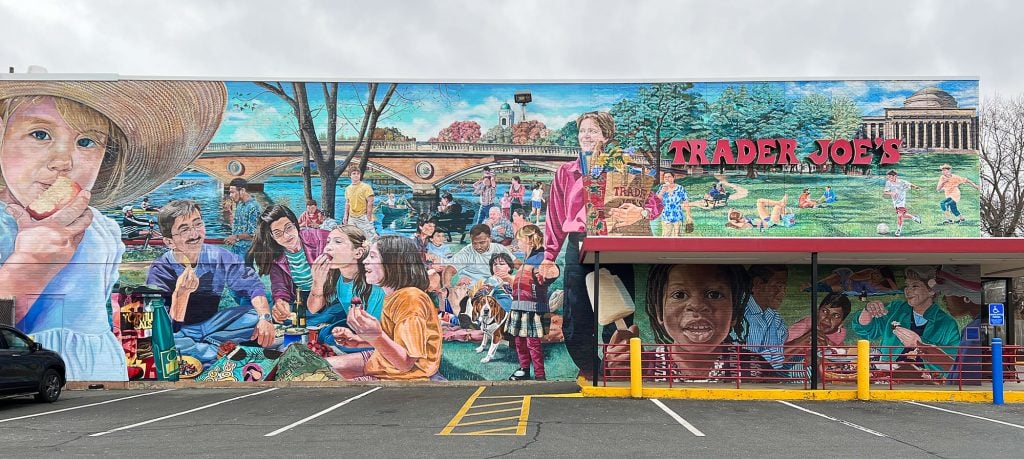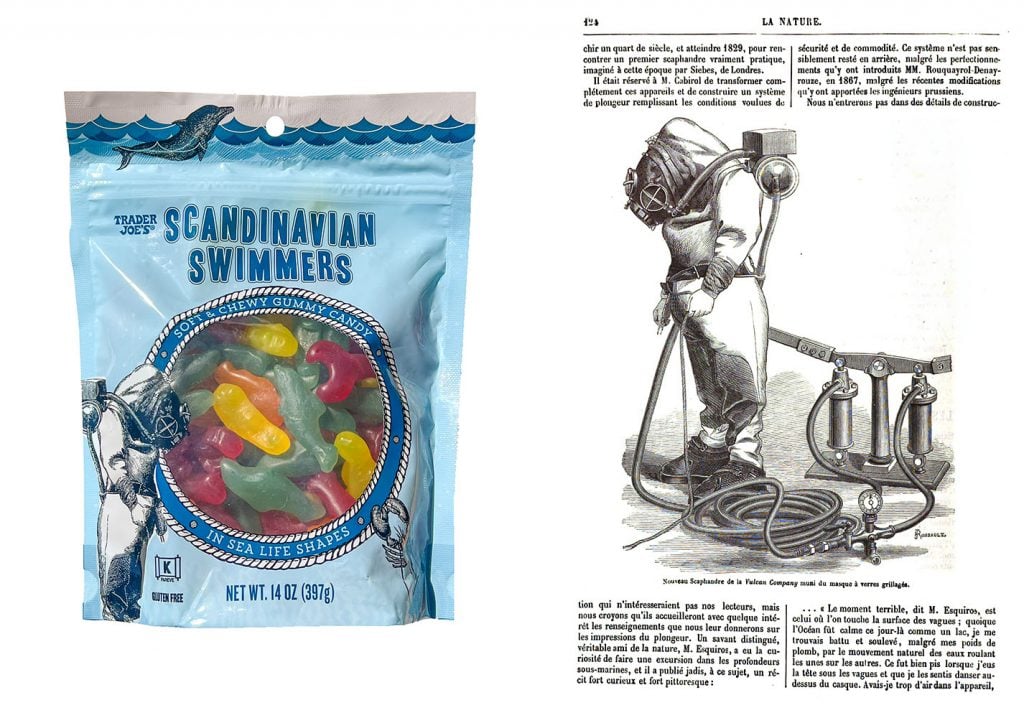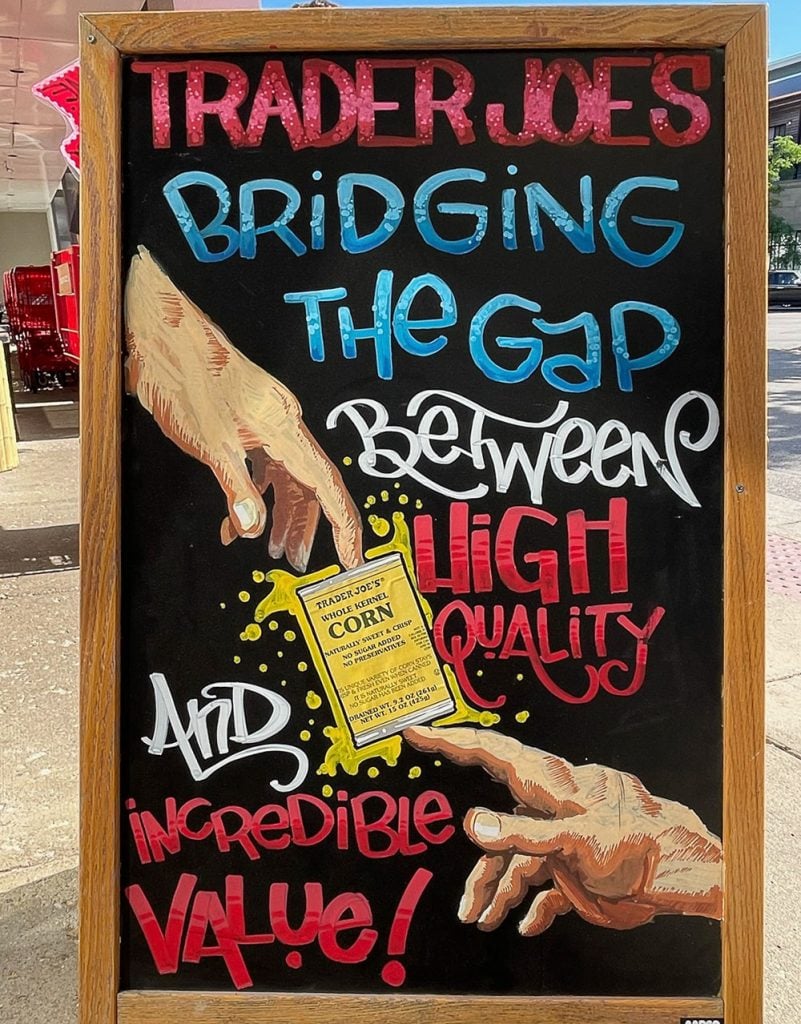
17 Nov New Book Reveals the Art in Trader Joe's Aisles
Source Credit: Content and images from Artnet News. Read the original article - https://news.artnet.com/art-world/trader-joes-art-book-julie-averbach-2569748
One day, at a Trader Joe’s grocery store, Julie Averbach picked up a box of caesar salad and was immediately struck by its label. Besides announcing the package’s contents, it contained an image of Augustus of Prima Porta, the first-ever sculpture carved of the Roman emperor. The lid of a plastic salad bowl was an unlikely (if admittedly witty) place to slap on a 1st-century C.E. statue, but Averbach soon discovered that elsewhere in Trader Joe’s—across its products, signs, and murals—were countless other nods to art. “The entire store,” she told me over email, “was a trove of art.”
That revelation sent Averbach on a mission. Over the course of nearly four years, the art history major visited more than 150 Trader Joe’s stores across the country to uncover how they deploy visual art in packaging and marketing. What she found was enough to fill a book: The Art of Trader Joe’s, which identifies and unpacks an abundance of iconic works featured in the stores—from the detail of the Birth of Venus on a tin of Italian Roast to a sign in Chicago that references Starry Night with the superb slogan “Your Gogh-To Neighborhood Store.”

The Art of Trader Joe’s by Julie Averbach. Courtesy of the author.
“I became primed to see every Trader Joe’s store through an artistic lens,” Averbach said of her research process. “By featuring artwork across its products and stores, Trader Joe’s elevates the ordinary grocery store into a place of joy, wonder, and creativity.”
Founded by entrepreneur Joe Coulombe in 1967, Trader Joe’s now counts more than 560 outlets across the United States. Each branch produces its own store art—whether signs or shelf labels—that is specific to the location. That entails, in Averbach’s words, “a staggering amount of artistic production for a grocery store,” most of it hand-crafted by in-house artists and all of it ephemeral, subject to the shift of the seasons.
There are, too, its private label products, which account for 80 percent of the chain’s offerings. Their labels fold art-historical art in with vivid colors, graphics, and typography to elevate them, at least visually, beyond mass-produced items. Through such packaging, Averbach added, the store’s “private label products gain a premium status.”

The facade of a Trader Joe’s store in Cambridge, Massachusetts. Photo: Julie Averbach.
Trader Joe’s dedication to art, Averbach noted, has been woven into its identity from the outset. Coulombe once declared that the store was “for overeducated and underpaid people, for all the classical musicians, museum curators, journalists.” This desire to meet the cultural consumer has seen the retailer forgo a more sleek, corporate aesthetic in favor of unique, personalized stores that appeal to specific communities—”making it feel more like a local neighborhood market than a branch of a national chain,” said Averbach.
The author, then, fittingly opens The Art of Trader Joe’s by comparing its stores to the cabinet of curiosities of yore, wherein its products offer “fanciful portals to destinations both near and far.” Bottles of olive oil and tubs of feta cheese pay visual tribute to Greek Ionic columns; an Evenus Port Dessert Wine label tips its hat to Alphonse Mucha; while jars of Masala Sauce are branded with an image of the Taj Mahal.
Victorian-era illustrations, meanwhile, dot everything from bags of peanut snacks to boxes of facial tissues. Averbach told me Coulombe was an avid collector of such print ephemera; as he wrote in his 2021 memoir, Becoming Trader Joe, he decided to draw from these images because they were no longer covered by copyright.

Left: Trader Joe’s Scandinavian Swimmers gummy candy. Right: An illustrated article from La Nature, 1874. Photos courtesy of Julie Averbach.
Other visual references required deeper digging to pin down, said Averbach. A cartoon of a deep-sea diver on a bag of gummy candies sent her thumbing through old issues of science journal La Nature until she located it in an 1874 article about diving technology. A skeleton print on the retailer’s spicy taco sauce reminded her of the art of Mexican illustrator José Guadalupe Posada; further research revealed it was in fact a 20th-century Posada work.
Most striking is the book’s section on Trader Joe’s signs, which channel a range of art-historical sources, whether as tribute or parody. The Mona Lisa and Rodin’s Thinker, for instance, turn up on murals in Manchester, Connecticut and Boca Raton, Florida, while Michelangelo’s Creation of Adam appears in stores from New Jersey to Illinois. And Andy Warhol’s Campbell Soup Cans, well, gets an apt re-contextualization in a Los Angeles store.

A sign at a Trader Joe’s store in Chicago, Illinois, playing on Michelangelo’s Creation of Adam. Photo: Julie Averbach.
Local flavors abound: Anish Kapoor’s Cloud Gate (aka the Bean) shows up as a mural in a store in Chicago’s South Loop, as does Emanuel Leutze’s famed Washington Crossing the Delaware in a branch in Washington, D.C.
In particular, Averbach recalled spotting a parody of Grant Wood’s American Gothic (1930), a jewel held by the Art Institute of Chicago, inside an elevator at a Trader Joe’s in that city. The reimagining recast the painting’s subjects as store employees. “I was delighted to see this unlikely parody in a grocery store elevator, of all places,” she said. “I rode the elevator up and down repeatedly to admire the work, much to the bewilderment of my fellow elevator passengers.”

Trader Joe’s parody of Grant Wood’s American Gothic. Photo: Julie Averbach.
This find, along with her many others, surfaced for Averbach how such art can be easily overlooked, installed as it is in a grocery store. Her project, in many ways, aims to correct that. While it is not affiliated with Trader Joe’s in any way, the book is nonetheless dedicated to the store’s artists, designers, and muralists for their work transforming an everyday grocery outing into an art experience—an “accessible art gallery,” per Averbach. One only has to look closer.
“When buying groceries at Trader Joe’s, we’re also collecting art, whether we know it or not,” Averbach added. “Some of the store’s most striking artwork hides in bathrooms, parking lots, and even on trash cans. Nothing is too mundane to become a work of art at Trader Joe’s.”
The Art of Trader Joe’s is available now in paperback, hardcover, and as a limited Collector’s Edition, which is hand-stamped with an original print by New York City illustrator Peter Arkle, whose work is featured at a Trader Joe’s in New York’s East Village.
Source Credit: Content and images from Artnet News. Read the original article - https://news.artnet.com/art-world/trader-joes-art-book-julie-averbach-2569748

